Choosing the perfect pair of diamond stud earrings has been a popular trend since the late 1800s, thanks to their versatility that seamlessly transitions from subtle to glamorous. Whether paired with casual attire or elegant ball gowns, diamond studs can complement any look.
But how do you go about selecting the ideal earrings? Are the types of diamond earring settings really that important?
Indeed, each style and setting type possesses distinct characteristics in terms of sparkle and safety. When deciding on the most suitable setting type for your diamond stud earrings, as well as for rings or necklaces, it’s crucial to consider the design features that might guide you toward the right choice.
Understanding how different diamond settings affect the way light is refracted should be taken into account, along with your personal style and preferences, of course.
This comprehensive overview of diamond stud earrings will help you navigate the selection process and choose the perfect pair that suits you best. So, stick around and discover all the insights you need!
DESIGN YOUR OWN ENGAGEMENT RING: START WITH A SETTING OR START WITH A DIAMOND. IT’S REALLY UP TO YOU!
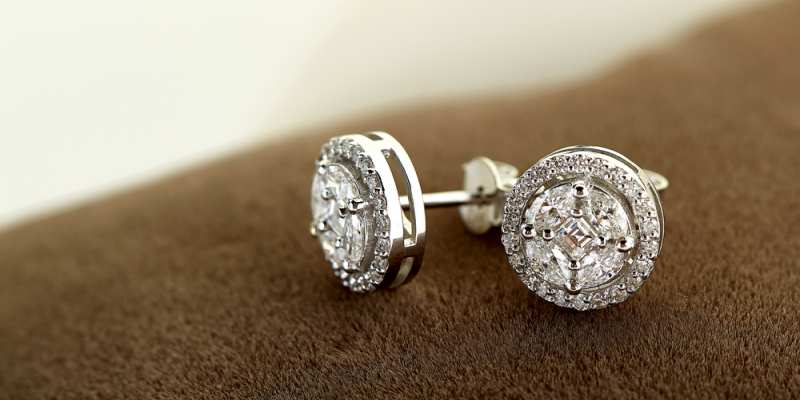
Selecting A Setting Type
When choosing a diamond stud earring setting, the design should be your primary consideration. The setting style you choose will have a significant impact on the overall look of your studs, and it can also reflect your personal style and preferences.
Let’s explore your options:
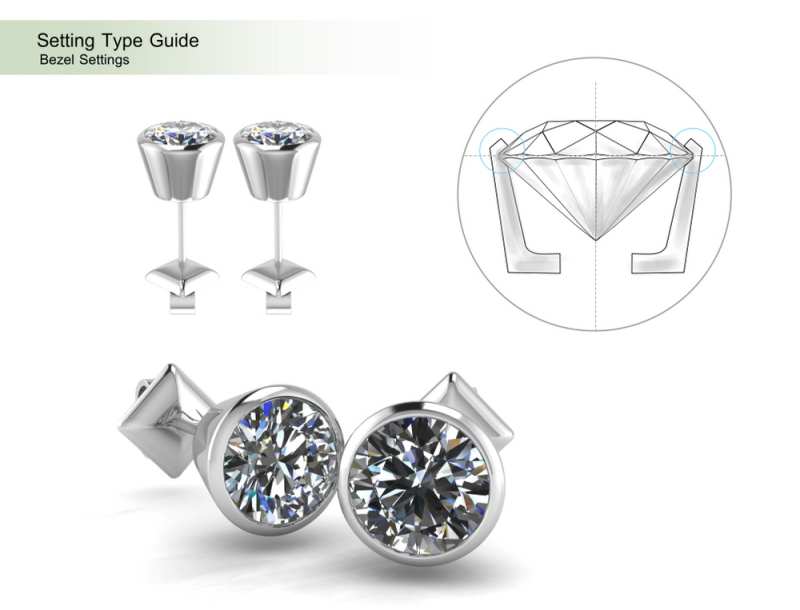
Bezel Setting
Bezel settings provide two key advantages: a contemporary look and exceptional protection.
This type of setting, typically used for round diamonds, securely holds the center gem by surrounding it with a metal frame.
There are two variations of bezel settings: fully covered and half-covered.
A fully covered bezel setting completely encircles the diamond, while a half-covered setting leaves the sides exposed.
The metal frame of a bezel setting offers excellent security for diamonds and other gemstones, making it an ideal choice for individuals leading active lifestyles.
Moreover, bezel settings exude an elegant aesthetic, making them a great option for those who appreciate trendy and modern designs.
However, it’s worth noting that compared to prong settings, bezel settings may obscure more of the gem, potentially reducing its brilliance and light reflection.
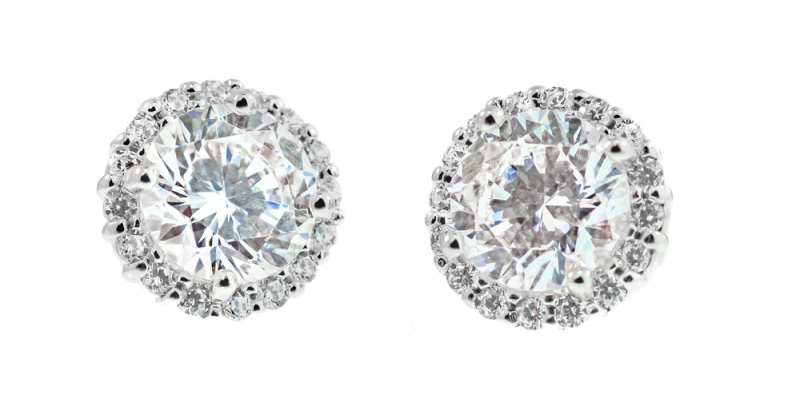
Halo Setting
Halo settings feature a central diamond surrounded by a ring of smaller diamonds, often using pavé diamonds as decorative accents.
While the single halo setting is the most common, there are also earrings available with dual halos, which consist of two concentric rings encircling the central diamond. This design offers a larger diamond surface area and a dazzling display of sparkle.
One of the main advantages of the halo setting is how it enhances the appearance of the central stone and creates the illusion of larger earrings. Additionally, if the center and side diamonds have different hues, the halo setting draws attention to the central stone, resulting in a captivating contrast of colors and brilliance.
The halo setting provides secure support for the central diamond and can also enhance the look of a smaller center stone. It is compatible with various diamond shapes, accommodating a wide range of preferences.
However, it’s important to note that halo settings require careful attention, as the small diamonds surrounding the central stone can be prone to slipping out if not properly maintained.
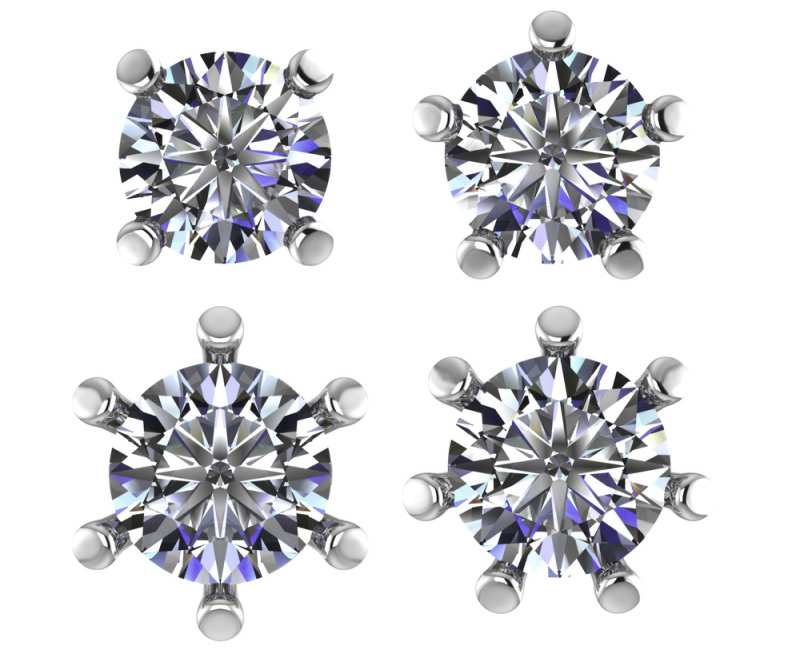
Prong Setting
Prong settings, also known as claw settings, are a popular and traditional choice for diamond stud earrings. Here are some options to consider:
- Bezel Settings:
Bezel settings offer a contemporary appearance and provide excellent protection for the diamond. The gem is surrounded by a metal frame, fully covering it in a full-case setting or leaving the sides exposed in a half-case setting. While bezel settings offer security, they may reduce the brightness and light reflection of the diamond compared to prong settings. - Three-Prong Setting:
Three-prong settings are not recommended for diamond rings but work well for earrings. This minimalist design allows more of the gem to be visible, maximizing light return and brilliance. The open three-prong setting, also known as the Martini setting, resembles a V shape and allows maximum light to enter the diamond. It is suitable for diamonds under 1.50 carats but may be less secure for everyday wear. - Four-Prong Setting:
A four-prong setting provides a balance between protection and elegance. The prongs and flat base resemble a basket when viewed from the side. It offers security in case one of the prongs becomes damaged over time, ensuring the diamond stays in place until repaired. Four-prong settings with an open shape allow light to reach the diamond, providing excellent brilliance. This style works well for diamonds weighing less than 2.0 carats and is suitable for various diamond shapes. - Six-Prong Setting:
Six-prong settings create a delicate crown that enhances the roundness of the central diamond. This setting offers proper security and longevity, even with daily wear. While it covers a larger surface area of the diamond compared to four or three-prong settings, light can still penetrate the gem. It is particularly suitable for larger diamonds weighing more than 2.0 carats. However, for diamonds below two carats, some luster may be lost beneath the prongs. - Eight-Prong Setting:
An eight-prong setting is exceptionally sturdy and emphasizes the contour of the main gem. Although more commonly used for larger diamond rings, it can provide extra security for earrings with diamonds weighing 3 carats or more. If you opt for diamonds weighing over 3.0 carats, an eight-prong setting with screw backs is recommended to ensure the earrings stay securely in place.
Remember to consider the size and shape of the diamonds, as well as your lifestyle and personal preferences, when selecting the ideal setting for your diamond stud earrings.
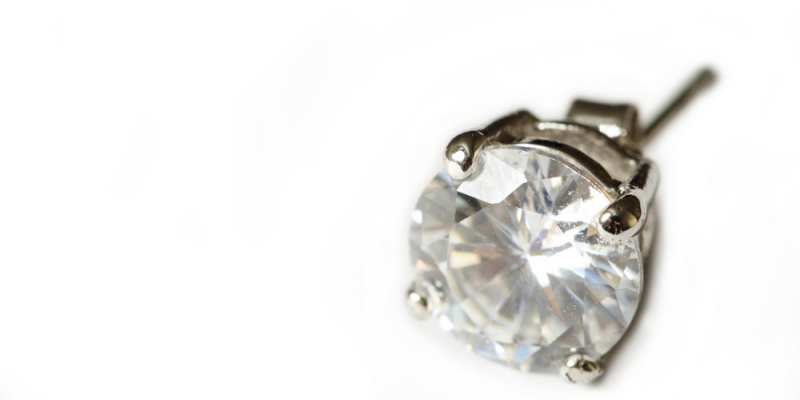
Illusion Setting
The illusion setting lives up to its name by creating the illusion of a larger carat single stone. This setting involves placing smaller diamonds side by side and holding them from underneath, giving the appearance of a single, larger diamond. It is commonly used with princess cut diamonds and adds a touch of complexity to the overall design.
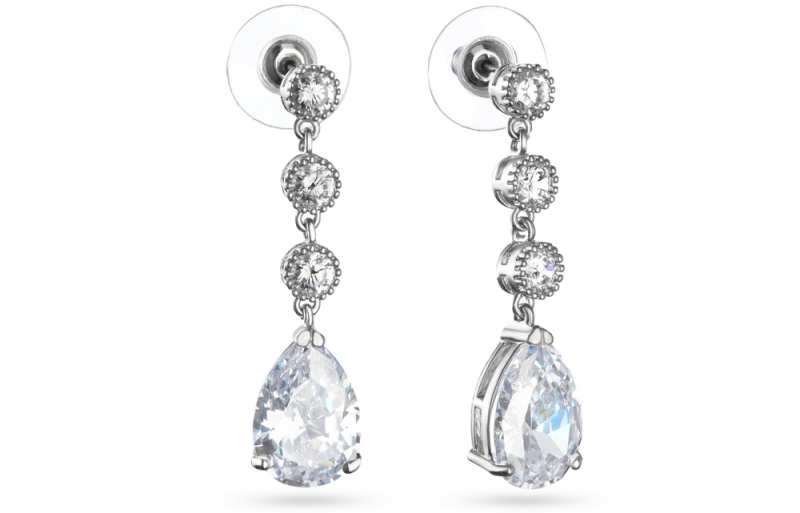
Dangle Setting
Dangle settings offer a more luxurious and spectacular option for showcasing diamonds. They can feature various setting types, such as four-prong or bezel settings, with a range of gemstone shapes to choose from. The diamonds in a dangle setting will gracefully sway with every movement, creating increased light refraction and enhancing the overall sparkle. Opting for a dangle setting is a lavish and exquisite choice that can elevate the radiance of your diamonds, capturing light and attention with your every gesture.
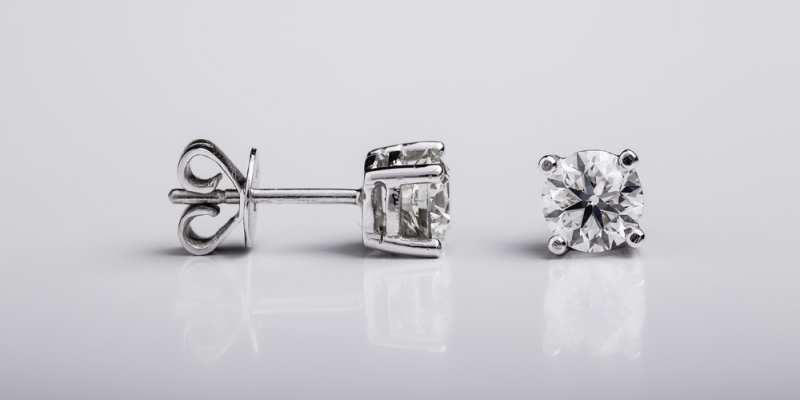
Selecting Your Earring Backs
Selecting the right earring backs is an important aspect of choosing your earring settings as it can impact the security, convenience, and overall comfort of wearing your studs.
Screw Backs
Screw backs, as the name suggests, require screwing onto the earring post instead of simply pushing them on. They provide a sturdy and compact backing option, making them suitable for individuals with smaller earlobes. However, screw backs can take longer to put on as they require proper screwing each time, and they may pose challenges for those with limited dexterity or mobility.
Keep in mind that while many people appreciate the added security of screw backs, they may not be the most convenient choice for those who need to quickly put on their earrings or have difficulty handling small objects.
Push Backs
The most common type of earring back is the push back. These backs use friction to securely hold the earrings in place. While push backs offer a decent level of security, they are not as secure as other options discussed in this article. However, many people still prefer push backs for their diamond earrings due to their affordability, ease of use, and inconspicuous appearance.
Secure Lock Backs
For maximum security, secure lock backs are the most reliable type of earring back. These backs fit onto the earring posts and feature a double groove safe locking system that securely locks them in place. They are an excellent choice for those who want to wear their diamond earrings with added peace of mind. Secure lock backs can also be suitable for larger diamond earrings as the wider back provides a comfortable fit. However, due to their larger size, they may be more noticeable when worn on smaller ears.
Consider your preferences and requirements when choosing the earring backs that best suit your needs.
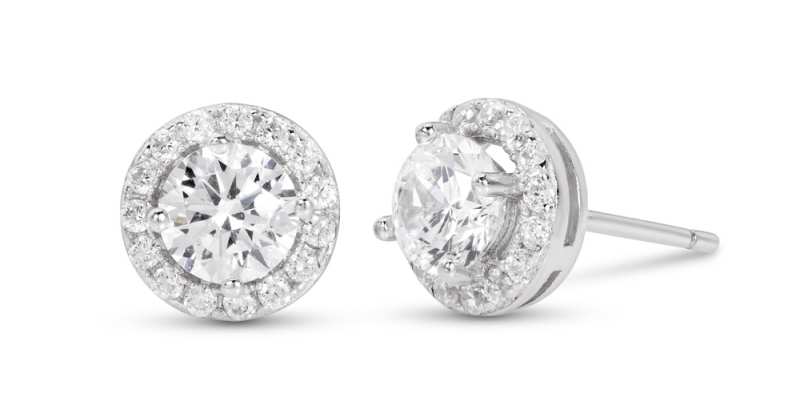
Choosing The Metals For Your Diamond Earrings
Once you have finalized the design of your setting and selected the earring backs, it becomes essential to carefully choose the metals for your diamond earrings to ensure they complement your chosen setting.
The choice of precious metal not only impacts the overall appearance of your earrings but also enhances their attractiveness for both you and your precious gems.
Additionally, if you have allergies to certain metals, finding the right precious metal can be a bit challenging.
So, which precious metal is the most suitable for you? Let’s explore the options:
White Gold:
White gold is a stylish and sophisticated precious metal that can enhance the coolness of white diamonds. Its rhodium-plating makes it the most brilliant among all precious metals, adding extra sparkle to your jewelry.
With its frosty nature, white gold has chilly undertones, making it particularly flattering for individuals with cool skin tones.
Rose Gold:
Rose gold is a unique and sentimental choice that has gained popularity over the years. This exquisite precious metal complements all complexion types and is especially well-suited for those with neutral skin tones.
Yellow Gold:
Yellow gold is a timeless and classic precious metal that imparts a golden sheen to diamond jewelry. Its natural glow looks best on individuals with warmer skin undertones.
Platinum:
Platinum is a luxurious precious metal that shares similarities with white gold in terms of its stylish white color and cool overtones. However, it offers several practical advantages over gold. Firstly, platinum is more durable and generally requires less maintenance compared to gold.
Moreover, platinum is non-allergenic, making it an excellent alternative for individuals allergic to nickel. Unlike gold, platinum does not contain nickel, making it a safer choice for those with allergies.
Consider these options and choose the precious metal that suits your preferences, enhances the beauty of your earrings, and ensures your comfort and well-being.
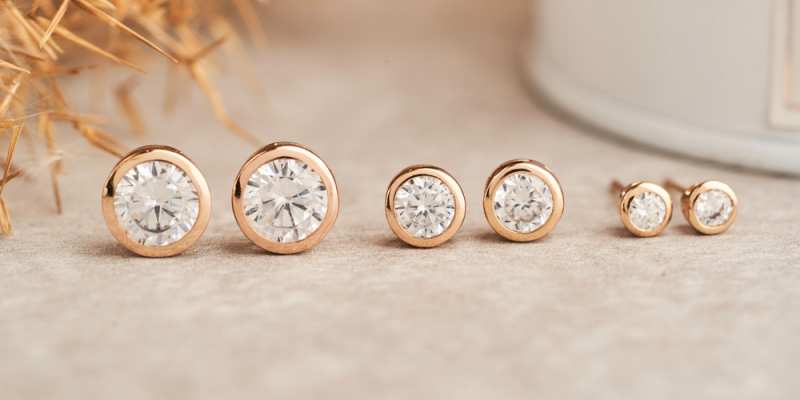
Conclusion
When it comes to diamond earrings, there is a wide range of options available for collectors to choose from. But which types of diamond earring settings are considered the best?
There are various types of diamond earring settings that cater to different preferences and priorities.
If your main focus is on highlighting the beauty of the diamond, a prong setting is a reliable choice. It allows maximum exposure to the diamond, accentuating its brilliance and sparkle.
For those concerned about the security of their gemstone, a bezel setting provides peace of mind. The diamond is securely enclosed within a metal rim, reducing the risk of it getting lost or damaged.
If you desire a dazzling and glamorous look, halo settings are a fantastic option. The center diamond is surrounded by a circle of smaller diamonds, creating a stunning and radiant effect.
Earring settings with bezel, halo, or prong styles are timeless and are unlikely to go out of fashion anytime soon. With these options, you can always count on having stylish earrings that complement your outfit. So, choose the setting that resonates with your personal style the most and enjoy your beautiful diamond earrings.


